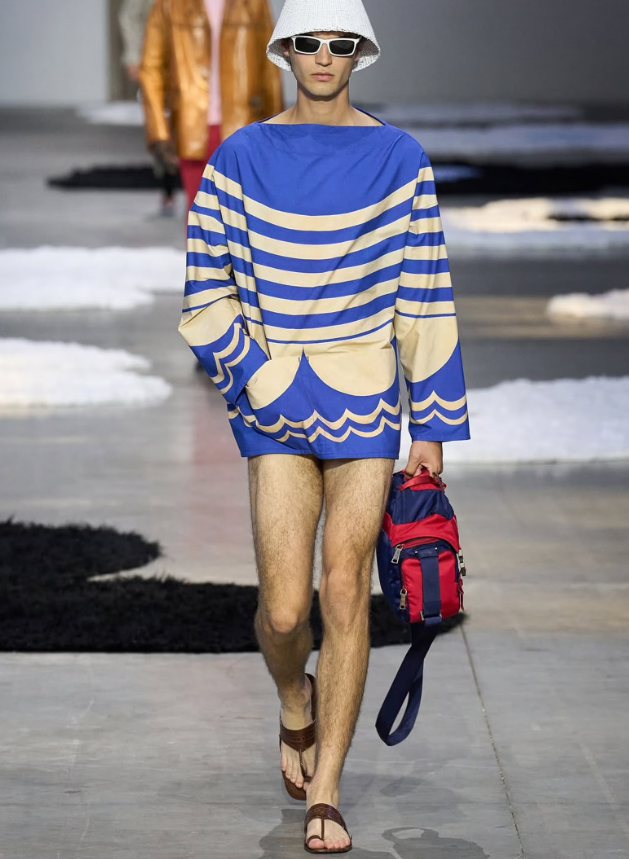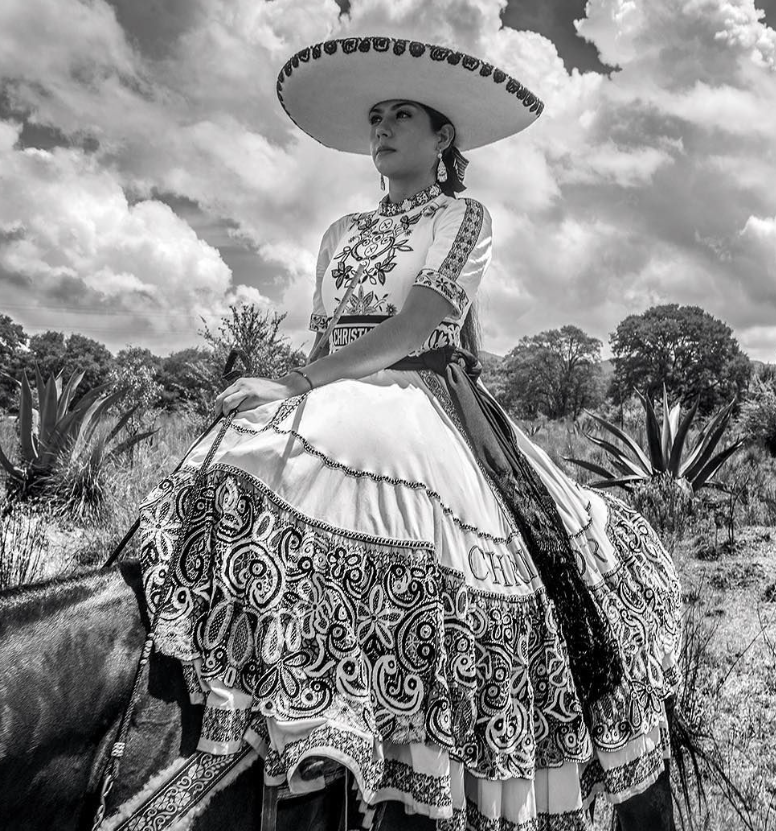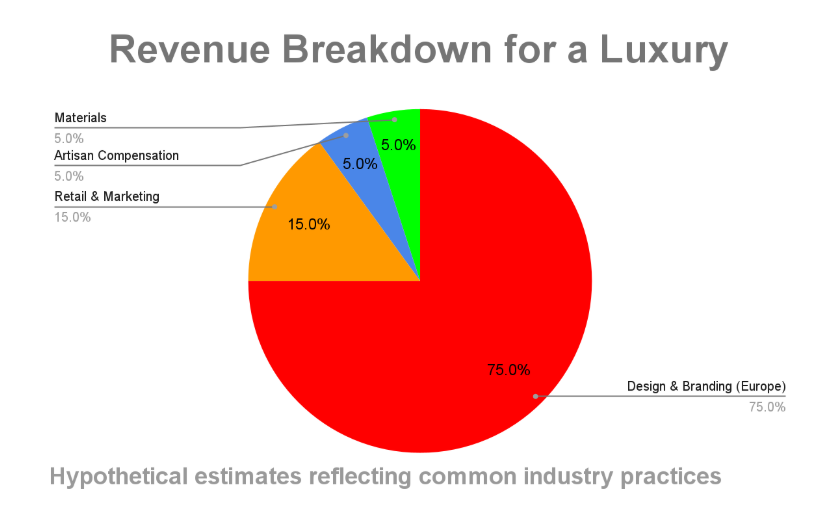Footwear Fiasco: Prada’s Controversial Sandal Launch
At Milan Fashion Week on June 22, 2025, Prada unveiled its Spring-Summer 2026 menswear collection, including a minimalist “leather footwear” design that bore an uncanny resemblance to India’s iconic Kolhapuri chappal—and ignited a global uproar within hours.
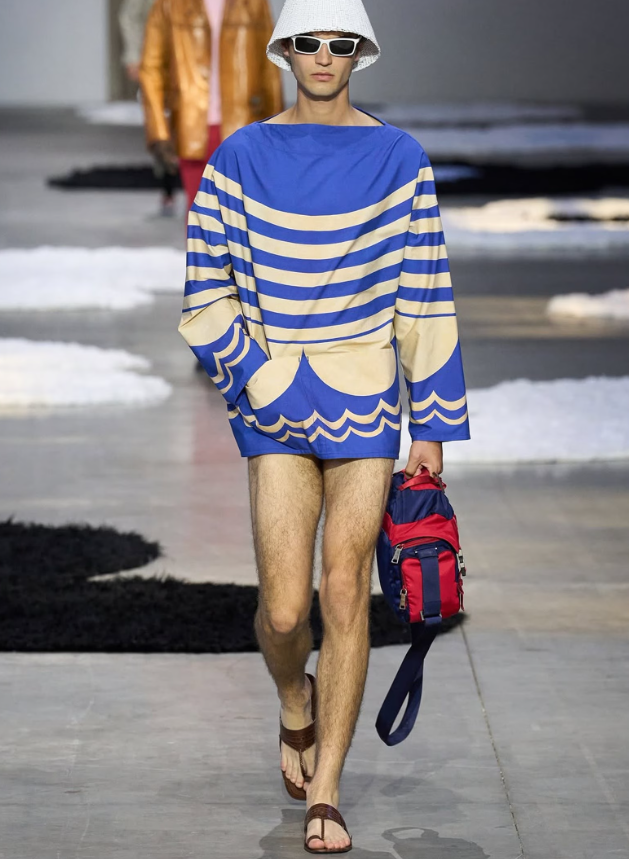 These slipper-style sandals, with their braided T-strap design, immediately caught global attention, not for their luxury appeal, but for their striking similarity to India’s iconic Kolhapuri chappals, a handcrafted leather sandal with a centuries-old heritage rooted in Kolhapur, Maharashtra.
These slipper-style sandals, with their braided T-strap design, immediately caught global attention, not for their luxury appeal, but for their striking similarity to India’s iconic Kolhapuri chappals, a handcrafted leather sandal with a centuries-old heritage rooted in Kolhapur, Maharashtra.
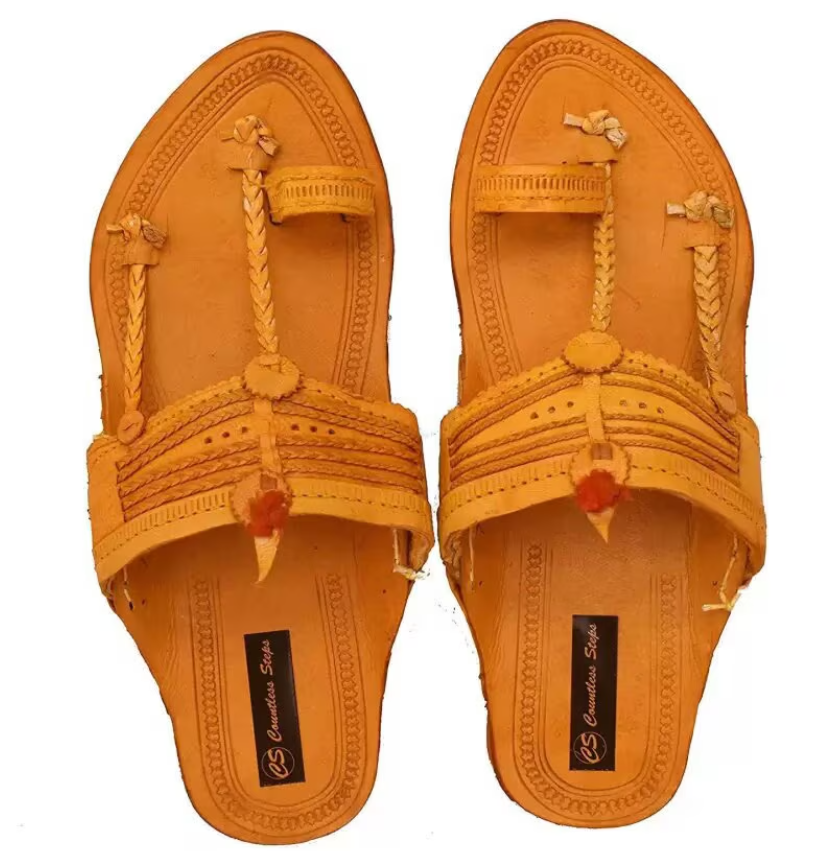 Why Did They Go Viral?
Why Did They Go Viral?
The sandals went viral almost instantly, but not for the reasons Prada might have hoped. Social media platforms, particularly X and Instagram, exploded with reactions as users recognized the design as nearly identical to Kolhapuri chappals, a cultural staple worn by everyone from farmers to urban millennials in India.
Posts on X called out Prada for what many saw as a “shameless cash grab,” with one user, @WokePandemic, noting that Kolhapuris, sold locally for ₹300-₹1,500 ($4-$18), were being rebranded as luxury items potentially priced at ₹1.2 lakh ($1,400). Another post by @thebetterindia highlighted the artisans’ struggle, stating, “These iconic sandals, handmade in Maharashtra for centuries, tell stories of tradition, resilience, and royalty. Yet, artisans still battle low profits and fading recognition.”
The viral outrage was fueled by memes, sarcastic comments, and hashtags such as #KolhapuriChappals, which amplified the debate over cultural appropriation.
The Controversy: Cultural Appropriation or Inspired Design?
Design Resemblance
Kolhapuri chappals, crafted since the 12th century by artisans from marginalized communities like the Dalit Chamar, feature intricate braided leather straps and toe loops. Prada’s sandals mirrored this aesthetic, down to the braiding pattern, but omitted any acknowledgment of their Indian origins, prompting accusations of design theft.
Awarded Geographical Indication (GI) status in 2019, Kolhapuris are protected in India, but as IP expert Sonal Madan notes, this offers no international enforcement, leaving artisans vulnerable to global brands.
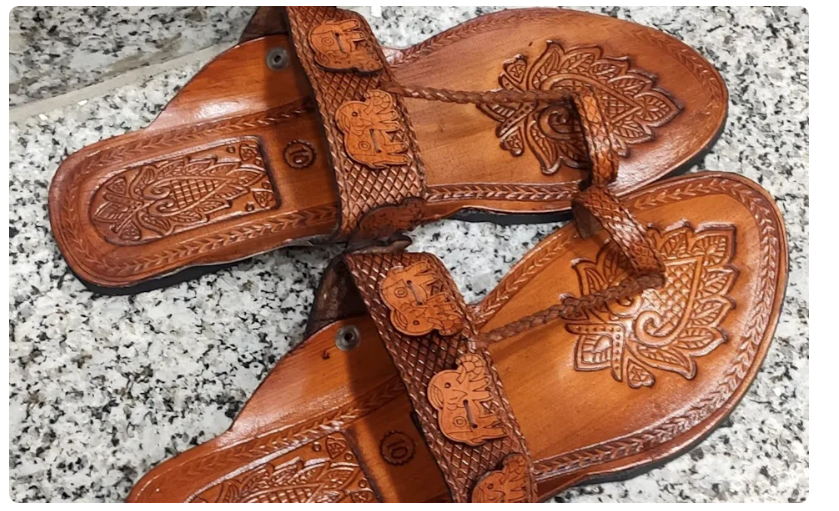 Cultural Appropriation Debate
Cultural Appropriation Debate
The controversy reignited a broader discussion: where is the line between cultural inspiration and appropriation? Cultural appropriation, as defined by fashion historian Swati Sharma, occurs when “elements of culture, particularly those of historically oppressed or colonized societies, are adopted by dominant groups without consent, attribution, or compensation.”
Prada’s initial silence on the Kolhapuri inspiration was seen as exploitative, especially since artisans earn ₹250-₹400 ($3-$5) per pair while luxury brands profit significantly.
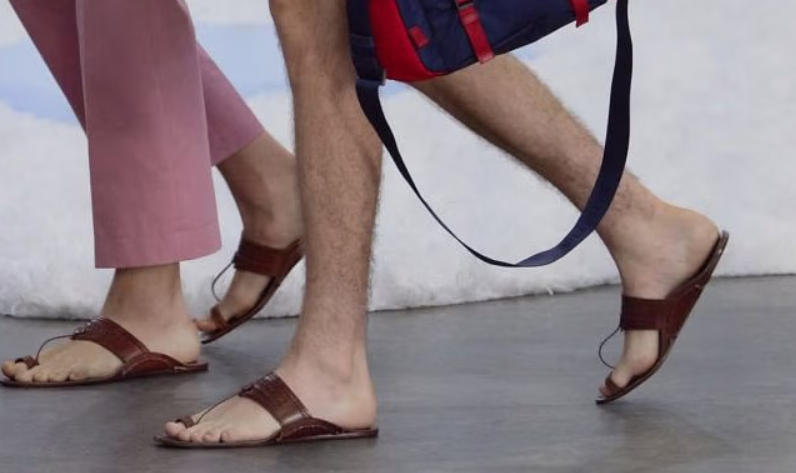 Indian designer Ritu Beri emphasized, “It’s about ethical recognition. India must push for royalty-sharing and co-branding.” Some, like artisan Shivaraj Soudagar, saw a silver lining, noting that Prada’s spotlight could globalize the craft, but only if artisans are fairly compensated. Others, including BJP MP Dhananjay Mahadik, called it a “serious infringement on Maharashtra’s cultural identity,” demanding legal action.
Indian designer Ritu Beri emphasized, “It’s about ethical recognition. India must push for royalty-sharing and co-branding.” Some, like artisan Shivaraj Soudagar, saw a silver lining, noting that Prada’s spotlight could globalize the craft, but only if artisans are fairly compensated. Others, including BJP MP Dhananjay Mahadik, called it a “serious infringement on Maharashtra’s cultural identity,” demanding legal action.
Public Reaction
The backlash was swift and multifaceted. On X, users like @folkloristan posted, “No @prada – these aren’t ‘leather sandals’ – this is a kolapuri. You do not get to look down upon our traditions, only to repackage them.” Fashion watchdog Diet Sabya shared runway footage, critiquing Western brands’ history of appropriating Indian designs.
Bollywood star Kareena Kapoor Khan also jumped into the conversation, amplifying it far beyond the fashion bubble. She posted a photo of her own traditional Kolhapuri chappals on Instagram with the caption:
“Sorry not Prada…but my OG Kolhapuri.”
The cheeky post quickly went viral, garnering thousands of likes and comments praising her for standing up for Indian artisans. As ABP Live reported, Kareena’s nod was widely interpreted as both a cultural clapback and a reminder that authentic Kolhapuris are still part of everyday Indian life, without the luxury markup.
Cultural historians and journalists weighed in, with Kanika Gahlaut noting that while Prada’s actions lacked legal grounds for infringement, they raised “ethical issues” by not initially crediting the source. The human rights group Dalit Voice underscored the sandals’ significance as “a legacy of Dalit craftsmanship and resilience,” amplifying calls for respect.
Meanwhile, memes mocked the price disparity, with one viral post quipping, “Prada’s selling my dad’s sandals for ₹1.2 lakh!”
For consumers who view luxury as an expression of their values, this controversy serves as a poignant reminder that provenance and authenticity are just as important as design.
Prada’s Response
Facing mounting pressure, Prada issued a response on June 27, 2025, through Lorenzo Bertelli, head of corporate social responsibility. In a letter to the Maharashtra Chamber of Commerce, Industry, and Agriculture (MACCIA), Bertelli acknowledged that the sandals were “inspired by traditional Indian handcrafted footwear, with a centuries-old heritage.”
He clarified that the design was still in development and not yet commercialized, adding, “We are committed to responsible design practices, fostering cultural engagement, and opening a dialogue with local Indian artisan communities.”
Prada also expressed interest in follow-up meetings to explore potential collaborations, a move that MACCIA President Lalit Gandhi praised as a step toward promoting ethical fashion. However, some artisans, like Prabha Satpute, remained skeptical, telling BBC Marathi, “They should be named after Kolhapur. Don’t take advantage of others’ labor.”
The West’s Longstanding Fascination with Indian Heritage
Prada’s Kolhapuri controversy may be the latest flashpoint. Still, it’s hardly the first time European luxury houses have mined Indian culture for creative inspiration—sometimes with little more than a passing nod to their sources. Over the past two decades, Indian motifs, textiles, and symbols have frequently appeared on runways, in campaigns, and high-profile collaborations. Here are just a few examples that underscore this persistent pattern:
During Pharrell Williams’ second menswear show, staged on Paris’ oldest bridge, the brand unveiled a playful miniature autorickshaw bag—complete with three wheels and a tiny roof. A ₹35 lakh bag shaped like an auto—a stark contrast between affordability and luxury pricing. While some praised it as a tribute to Indian street culture, others criticized it as an expensive novelty that reduced a familiar part of daily Indian life to a collectible prop. You could buy 15 real auto-rickshaws for that price,’ quip netizens.
Maria Grazia Chiuri presented a shimmering, mukaish-embroidered long coat, echoing the traditional metal-thread embellishment perfected by artisans in Lucknow. Despite the craftsmanship on display, the collection offered minimal credit or context about the heritage technique, sparking quiet discontent among textile experts.
Over the years, Gaultier has incorporated saree-inspired drapes, turbans, bindis, and sherwani jackets into his couture lines, describing them as celebrations of “exotic allure.” While undeniably theatrical, these collections often treated Indian culture as a stylistic flourish rather than a living tradition.
- John Galliano (Dior, early 2000s):
Galliano’s collections drew heavily on Mughal silhouettes, including empire-waist tunics and lavish brocades reminiscent of the royal courts of India. Though visually stunning, the designs rarely credited their subcontinental origins.
- Karl Lagerfeld (Chanel, 2012):
Chanel’s Métiers d’Art collection was staged in Mumbai’s Taj Mahal Palace Hotel, featuring models in Nehru-collar jackets and sari-inspired drapes. Despite the grand setting, mentions of Indian embroiderers and artisans remained relegated to tiny footnotes in the press rather than receiving front-and-center acknowledgment.
This recurring fascination reflects a complicated truth: Indian heritage has become a rich source of visual language for luxury fashion, yet local communities are rarely full participants in the profits or storytelling.
In many of these cases, brands have offered limited transparency about sourcing, compensation, or collaboration, fueling the argument that what is often billed as a cultural exchange can look suspiciously like extraction dressed in luxury packaging.
As designer Shirin Mann observed:
“It’s time for brands to realize that referencing a culture comes with a responsibility to credit and uplift the people who shaped it.”
Broader Discussion: Inspiration vs. Appropriation
Prada’s Kolhapuri controversy isn’t a one-off. It’s part of a larger, persistent pattern in global fashion, where inspiration blurs into exploitation. Here’s how it stacks up:
High-Profile Cases of Alleged Cultural Appropriation in Luxury Fashion:
Dior (2019)
- Inspired piece: A collection modeled after the attire of Mexican escaramuzas (horsewomen).
- Controversy: Released without credit or collaboration with Mexican artisans. Local designers accused Dior of exoticizing a living tradition.
- Response: Dior later partnered with artisans in Chiapas, but only after public outcry.
Isabel Marant (2015)
- Inspired piece: A blouse design matching the traditional embroidery of Mexico’s Mixe community.
- Controversy: The blouse closely resembled Mixe patterns protected under Mexican law. Marant initially claimed originality before admitting “inadvertent” borrowing.
- Response: The Mexican government took legal steps, pushing for international craft protections.
Gucci (2018)
- Inspired piece: Turban-style headwear sold as “Indy Full Turban.”
- Controversy: Sikh communities protested, citing deep religious symbolism. Critics slammed the sale of sacred cultural identity as trendwear.
- Response: Gucci pulled the product and issued an apology.
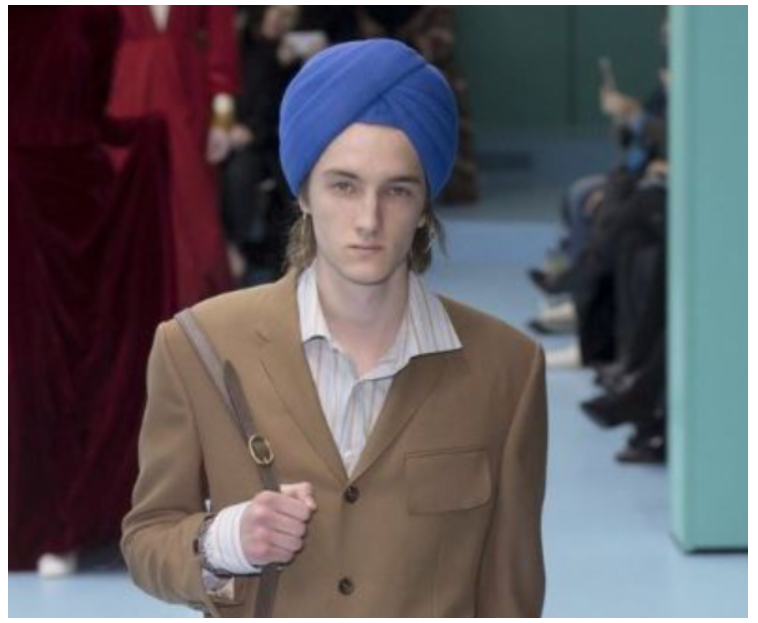 Victoria’s Secret (2012)
Victoria’s Secret (2012)
- Inspired piece: A runway costume featuring Native American war bonnets.
- Controversy: The headdress is sacred in many Indigenous tribes, not a fashion prop.
- Response: The brand issued a public apology and cut the look from the broadcast.
Prada’s Pradamalia Blackface Controversy (2018)
The Kolhapuri sandal scandal echoes past controversies for Prada—most notably its 2018 Pradamalia figurines, which were pulled after public outcry over their resemblance to blackface imagery.
- In December 2018, Prada came under intense global scrutiny after launching a holiday window display at its SoHo store in New York City, featuring small figurines and keychains from its Pradamalia collection. The items—intended to be whimsical, fictional creatures—were part of a larger campaign featuring monkey-like characters with dark brown faces and oversized red lips.
Although the brand later formed a Diversity Council, critics argue that the latest appropriation controversy reveals systemic issues that remain unresolved.
The Kolhapuri Case in Context
- Economic Disparity: While Prada priced its sandals over ₹1.2 lakh (~$1,300), actual Kolhapuris made by Indian artisans sell for as low as ₹600 ($7), often with razor-thin margins.
- Declining Craftsmanship: According to The Indian Express, only 15,000–20,000 artisans remain in the Kolhapuri ecosystem, down from over 100,000 in past decades. Craft survival is threatened not just by appropriation but also by:
- Cow protection laws (since 2014) have constrained leather availability.
- Rising raw material costs.
- Limited youth interest in pursuing traditional crafts.
- Legal Loopholes: India’s Geographical Indication (GI) tag for Kolhapuris (awarded in 2019) offers domestic protection but lacks international enforcement.
As IP expert Sonal Madan notes, this leaves artisans vulnerable on the global stage. The PIL against Prada in the Bombay High Court may set a precedent, but enforcement abroad remains murky.
A Global Push to Decolonize Fashion
Consumers—especially Gen Z and Millennial shoppers—are increasingly demanding the following:
- Transparency in sourcing and design inspiration.
- Fair compensation for artisans.
- Co-branding or collaborations that credit cultural origins.
Lalit Gandhi, president of the Kolhapuri Footwear Association, told The Hindu:
- “Cultural exchange in fashion is great, but it has to come with proper credit and collaboration.”
- Designer Shirin Mann sees opportunity in the controversy:
- “This might be the spotlight Kolhapuris needed. If it sparks pride and demand locally, there’s silver lining.”
This growing movement reflects a shift in consumer values: from blind prestige to conscious provenance. For luxury to remain relevant, ethical storytelling isn’t optional—it’s the future.
The Road Ahead
Prada’s Kolhapuri sandals, Dior’s mukaish embroidery, and Vuitton’s autorickshaw bag all point to a more profound need for luxury brands to move beyond surface-level homages. The future of fashion lies in transparent co-creation, fair compensation, and an acknowledgment that cultural heritage is not just raw material—it’s living identity.
Call to Action: What’s Next for Prada?
This scandal raises questions about Prada’s brand perception. Will consumers view this as a one-off misstep or a pattern, given past controversies like the 2018 Pradamalia collection, which was criticized for resembling blackface imagery? The brand’s swift acknowledgment and promise of collaboration may mitigate the damage.
Still, public sentiment on X suggests lingering distrust, with users demanding tangible action, such as co-branded lines or royalties for artisans.
Whether this blows over as a trend cycle controversy or prompts lasting change depends on Prada’s follow-through. Will they prioritize ethical partnerships, or will this be another case of a luxury brand profiting off cultural heritage?
The Intersection of Luxury and Ethics @ The Luxury Closet
Transparency and respect in design references are non-negotiable in today’s fashion landscape. Prada’s Kolhapuri controversy is a reminder that true luxury lies not just in craftsmanship but in honoring the communities behind it. As consumers, we must hold brands accountable—because cultural heritage isn’t just inspiration; it’s a part of our identity.
At The Luxury Closet, every piece carries authenticity and the respect it deserves. Explore and discover hidden treasures that are acknowledged, loved, and cherished for what they are and the hands that crafted them.


